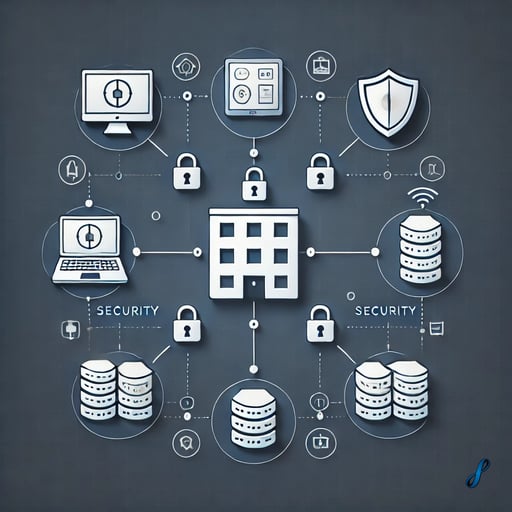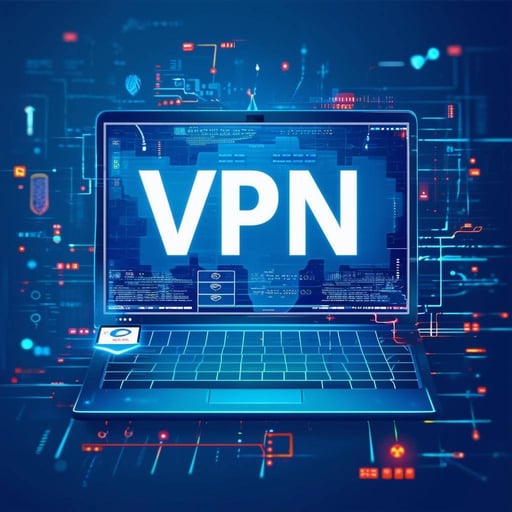
Securing Your Business Network in Ten Essential Steps Can Be a Game Changer. Are you doing all of these things?
In today’s highly connected digital environment, businesses must prioritize network security to protect sensitive data, ensure uninterrupted operations, and maintain the trust of clients and partners. Cyber threats continue to evolve, targeting enterprises of all sizes. To safeguard your business network, follow these ten essential steps, designed to enhance your security posture and reduce vulnerabilities.
1. Centralize Your Router/ Access Point Placement(s)
For optimal signal distribution and reduced risk of interception, position your Wi-Fi equipment in a central location within your office space. A well-placed router minimizes the potential for external actors to detect or access your network from outside the physical premises. If your Wi-Fi equipment has the ability to adjust the signal strength, it is a good idea to play with this feature to minimize wi-fi signal leakage outside of the areas you need coverage.
2. Enforce Strong Password Policies
Implement robust password policies for all network access points, including routers, network devices, and user accounts. Passwords should be complex, incorporating a mix of letters, numbers, and special characters. Additionally, require regular updates and enforce uniqueness across platforms to mitigate risks associated with credential theft. We recommend password changes at least once a month (if not weekly). Using strong encryption and authentication methods, this will have zero impact on your authorized users, but makes it much harder for threat actors to get in.
3. Change Default Login Credentials
One of the simplest ways attackers gain access to business networks is by exploiting unchanged default login credentials on routers and other network devices. Upon deployment, immediately update default admin usernames and passwords with complex, secure credentials. Better yet, integrate the wi-fi network authentication into your Entra or Active Directory using proper protocols and certificates. Either way, NEVER leave your networking equipment with the default passwords.
4. Enable Enterprise-Grade Firewalls and Encryption
Activate your network firewall and ensure that enterprise-grade encryption protocols, such as WPA3 (or better when available), are used for your wireless network. This helps protect sensitive data transmitted across the network and prevents unauthorized devices from accessing the network. Ensure that firewall configurations are aligned with your company’s security policies and continuously monitored for potential vulnerabilities.
5. Segment Your Network and Create Guest Access
Segregate internal traffic by creating different network segments. One effective strategy is setting up a separate guest network for visitors and non-essential devices, isolating this from your core business systems. Network segmentation reduces the risk of sensitive data exposure in the event of a compromise on a less critical part of the network. We recommend a "Guest Network", a "Device Network" (for things like cameras, IoT and other things that do not need access to sensitive data), and then a "Corporate Network" with proper permission levels to enable employee productivity.
6. Adopt Virtual Private Network (VPN) Solutions
For remote access and distributed teams, using a VPN is critical. VPNs encrypt traffic between remote employees and your network, ensuring that sensitive information such as login credentials and confidential business communications are shielded from external threats. Ensure that VPN policies include mandatory usage and regular audits. In fact, unless a remote user is authenticated using Multi-Factor Authentication via VPN, there should be no access ever granted to anything in your environment.

7. Implement Intrusion Detection and Prevention Systems (IDS/IPS)
Albeit one of the oldest recommendations in the cyber security space, perimeter security is still a staple in every security strategy. Investing in advanced network security protocols like Intrusion Detection Systems (IDS) and Intrusion Prevention Systems (IPS) is highly recommended for modern enterprises. IDS monitors traffic for suspicious activity, while IPS takes proactive measures to block or mitigate attacks in real-time. These systems provide an additional layer of defense beyond basic firewall configurations.
8. Regularly Update Firmware and Software
Keeping your network devices, including routers, switches, and endpoints, up to date is a critical security practice. Regular firmware and software updates patch known vulnerabilities and often introduce enhanced security features. Set up automatic updates where possible and audit your infrastructure regularly to ensure compliance.
9. Disable Unnecessary Remote Management
Many network devices have remote management features that allow administrators to access them from outside the network. While this can be convenient, it also opens a potential attack vector. Disable remote management unless absolutely necessary, and if required, ensure that secure authentication methods and encryption protocols are applied. We strongly recommend disabling applications that are known to enable threat actors such as TeamViewer, AnyDesk, LogMeIn and other well-known applications that are "convenient" for employees to use. These same applications are also a serious threat to your cyber security posture if not managed properly.
10. Monitor Connected Devices and Conduct Regular Audits
Maintaining visibility into all devices connected to your business network is essential for security. Conduct regular audits to identify and verify every device on the network. Any unauthorized or unknown devices should be removed immediately, and suspicious activity should be investigated. Implement automated monitoring solutions where possible to alert administrators of unusual behavior in real-time.
Additional Security Best Practices for Enterprises
To further enhance network security, businesses should consider adopting the following additional practices:
-
Zero Trust Architecture (ZTA): Implementing a zero-trust model can limit access based on user identity, device security posture, and the sensitivity of data. This reduces the chance of unauthorized access, even from within the network.
-
Multi-Factor Authentication (MFA): Enforce MFA across your network, particularly for administrative accounts and critical business applications. MFA adds an additional layer of security by requiring more than just a password for access.
-
Security Information and Event Management (SIEM) Systems: Deploy SIEM systems to collect and analyze real-time data from your network, detecting and responding to potential security threats before they cause damage.
By following these ten steps and integrating advanced security protocols, businesses can significantly enhance their network security, ensuring the protection of sensitive data, reducing the likelihood of operational disruptions, and minimizing exposure to cyber threats. With the growing complexity of cyberattacks, proactive network security strategies are no longer optional—they are essential for sustainable business operations.
If this feels overwhelming or too much for you to take on for your business, reach out to us. We help companies around the world simplify their security posture and minimize potential threats every day of the year.